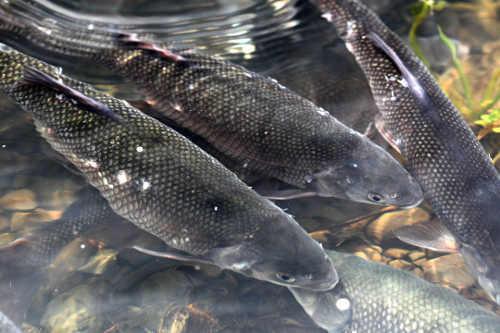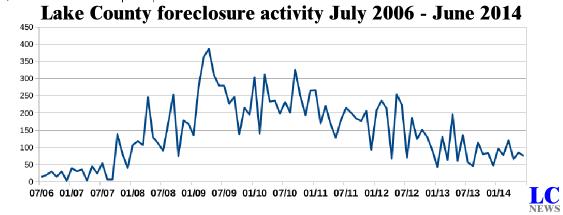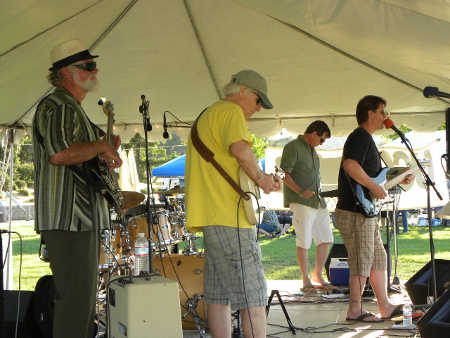
LAKE COUNTY, Calif. – State wildlife officials are proposing to list a minnow native to Clear Lake that once was a Pomo food staple as a “threatened” species under the California Endangered Species Act, with a potential decision coming as soon as next week.
The California Department of Fish and Wildlife completed its status review of the Clear Lake hitch and is recommending the listing, which it believes is warranted.
At its June 4 meeting in Fortuna, the California Fish and Game Commission formally accepted the Department of Fish and Wildlife's status review on the hitch for consideration.
The commission is expected to make the final decision on the listing at its two-day meeting which takes place Wednesday, Aug. 6, in San Diego.
In his memo to the Fish and Game Commission, California Department of Fish and Wildlife Director Charlton Bonham wrote, “It is the Department's recommendation that Clear Lake hitch is likely to become an endangered species in the foreseeable future in the absence of the protections and management efforts required by CESA (California Endangered Species Act), and the petitioned action is warranted.”
The report can be found at http://www.fgc.ca.gov/meetings/2014/aug/080614docs.aspx .
The agency's status review finds that threats to the hitch's continued existence include present or threatened modification or destruction of habitat, as well as predation and competition with non-native fishes, among them sports fish like black bass, sunfish and catfish which are known to prey on the hitch in all of its life stages.
“There is no scientific information indicating other factors, such as overexploitation, disease, and other natural occurrences or human-related activities, are threats to the continued existence of the species,” the report said.
Management actions needed to improve the likelihood of the hitch's survival include a scientifically valid population estimate or index; a thorough assessment of barriers to fish movement on primary spawning streams; an analysis of spawning habitat in primary spawning streams and recommendations for restoration actions; a review of reservoir operations at Highland Springs, Adobe Creek and Kelsey Creek detention dams to assess water release operations that may be impacting hitch; and development and implementation of guidelines for minimizing impacts and, other specific actions that could improve the hitch's status, according to the report.
In September 2012, the Center for Biological Diversity petitioned to protect the hitch under both the federal Endangered Species Act and the state’s Endangered Species Act, as Lake County News has reported.
In March 2013, the California Fish and Game Commission voted 2-1 to designate the hitch as a candidates species for California Endangered Species Act protection.
Jeff Miller of the Center of Biological Diversity said the US Fish & Wildlife Service still has not responded to the federal petition for the hitch.
Miller said the organization was happy with the scientists used for the state's peer review. “We trusted they would have good comments and suggestions,” he said, adding, “It looks like they did.”
While they're pleased with the review, the Center for Biological Diversity is going to recommend that the Fish and Game Commission consider endangered – rather than threatened – status for the hitch due to the low spawning numbers in the last few years.
The organization will make the pitch for the endangered listing at the San Diego meeting Aug. 6, Miller said.
“Practically, there's not a lot of difference between the threatened and endangered listing,” he said, with threatened status offering more exemptions.
Hitch are facing huge challenges, he said. Those challenges include 92 percent of the fish's historical migration paths now being blocked by obstacles, meaning they're only able to access a fraction of their former habitats, a factor pointed out in the Department of Fish and Wildlife report.
That, said Miller, leads to concerns about inbreeding, besides the impacts on the fish from low stream flow due to critically dry years like this one. And more dry years can be expected due to climate change, Miller said.
Changes to the environment caused the dieout of the Clear Lake splittail, which spawned later and had to stay in streams longer, Miller said. The Department of Fish and Wildlife report said the Clear Lake splittail was last recorded in 1972.
One of the biggest questions that remains about the hitch's possible listing relates to the potential impacts on the Lake County economy and overall water use.
One area where changes should be minimized relates to tribal harvest, which the listing petition recommends be allowed to continue as long as there is a sustainable plan.
Miller said he's been working with Lake County tribes in the petition process – he approached them for input long before submitting the petitions – and said he will continue to advocate for tribal harvest.
“That culture component shouldn’t be sacrificed,” he said, pointing out that the tribes already are voluntarily limiting harvests.
He added of the tribes, “They’re doing a lot of the science and research of what’s going on with this fish.”
Sarah Ryan, environmental director for Big Valley Rancheria, said the Big Valley tribe still does limited hitch harvest under a collection permit for scientific uses, with the allowance of using them for whatever purpose afterwards. Those harvests, however, have been cut back a lot because of the low fish numbers, she said.
There also appears to be no anticipated impact for the Yolo County Flood Control and Water Conservation District, which holds the rights to Clear Lake's water.
General Manager Tim O'Halloran said the district investigated the potential listings and the conclusion was that there would not be much impact on its operations.
“It seemed like most of the focus was on the upstream tributaries,” O'Halloran said.
Miller said the process for any resulting hitch listing will follow those used with other fish listings. “We’re not going to be reinventing the wheel here.”
He said there will be a regulatory overview of water diversions, with scrutiny placed on illegal or unpermitted diversions.
For those legally taking water from streams or Clear Lake, they'll have to consider the impact on the hitch, he said, with potential impacts on pumping practices.
“The sky is not going to fall because of this but I do think it’s going to mean some changes in water use and diversion,” he said.
Miller suggested that changes to water use can be made up in efficiency, water conservation, recycling and other opportunities to keep water in local streams.
“None of that is going to happen right away,” Miller said.
He added that he doesn’t think it will be as draconian as people think it will be.
Greg Giusti, director of the University of California Cooperative Extension for Lake and Mendocino counties, was one of the peer reviewers on the original draft of the Department of Fish and Wildlife study of the hitch.
He said he won't be attending the Aug. 6 meeting in San Diego, noting it would not be appropriate for him to take an advocacy position on the matter.
As for what potential impacts he foresees coming from a possible listing, Giusti said that it's just conjecture at this point.
He said he's had several phone conversations and meetings with Department of Fish and Wildlife officials to discuss possible outcomes of a listing, and has shared that information with county planning and water officials.
While nothing has been determined, “Certainly many of us have been thinking of options and approaches for nearly a year now,” he said.
Giusti suggested that any California Environmental Quality Act-compliant projects near streams could be affected.
A listing also could potentially affect water users who draw directly from creeks during the spawning seasons. Giusti said the county may have to develop “hitch specific” guidelines and regulatory pathways to afford land owners the ability to seek “incidental take” permits under the Environmental Species Act.
“Again, I’m simply sharing ‘what ifs,' but one thing is very certain, it will not be business as usual,” Giusti said.
Email Elizabeth Larson at This email address is being protected from spambots. You need JavaScript enabled to view it. . Follow her on Twitter, @ERLarson, or Lake County News, @LakeCoNews.












